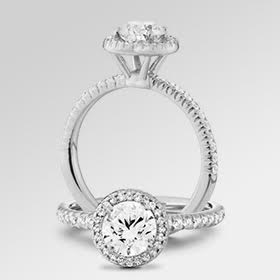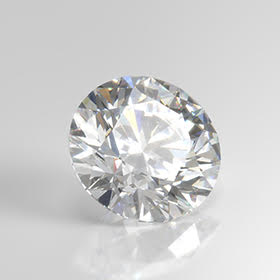Lab Grown Diamond Clarity, Quality and Value
If you’re in the market for a diamond, you’ve undoubtedly heard people talk about the 4Cs: carat weight, cut, color, and clarity. While many will say that clarity is the least important of the 4Cs, it’s helpful to understand how it affects the quality and value of the diamond you buy.
If you’ve already started shopping, you may have found that the grades for clarity leave you scratching your head. However, once you learn a little more about clarity, you’ll have a much easier time finding that perfect diamond for you or your loved one.
So, what is clarity?
When we talk about clarity, we’re referring to the imperfections in a diamond that impact its brilliance or sparkle. A diamond’s clarity is determined by two kinds of imperfections: blemishes and inclusions. Think of blemishes as small scars that are present on the surface of a diamond, for blemishes tend to occur during the process of cutting or polishing a diamond.
Inclusions can be thought of as birthmarks, which occur naturally inside of diamonds as they form. Just as no two people have the same birthmarks, no two diamonds have the same inclusion patterns. Those inclusions are what make each diamond charming and unique.
Inclusions are present in over 99% of all diamonds whether they’re lab-grown or mined—which is why most jewelers have never actually seen a flawless diamond. So, it is not so much the presence of inclusions but instead the size, number, and placement of inclusions within a diamond that affect its value.
Lower quality diamonds may have significant inclusions, which dull the brilliance of the diamond and can be seen with the naked eye. The highest quality diamonds are eye clean, which means their inclusions are not visible without the use of magnification. Any diamond that is eye clean will be graded above SI (Slightly Included).
Let’s take a closer look at the clarity grading scale.
VVS1 – VVS2 (Very, Very Slightly Included): Only about 10% of diamonds sold have such high clarity. Any inclusions present in these diamonds are even difficult for the grader to see under 10x magnification.
VS1 – VS2 (Very Slightly Included): About 50% of diamonds sold fall under these grades. These diamonds have minor inclusions, but they can’t be seen with the naked eye.
SI1 – SI2 (Slightly Included): About 30% of diamonds sold fall under these grades. The inclusions in S1 diamonds tend to be difficult to notice without magnification, while the inclusions in S2 diamonds are more noticeable without, especially in stones larger than 1 carat.
I1 – I3 (Included): The inclusions of these diamonds are noticeable and may interfere with their brilliance.
As useful as it is to understand how diamonds are graded on clarity, remember that most inclusions will not affect the sparkle of your diamond. Use these tips to help you find the best diamond for your money, but feel free to contact us. At New World Diamonds, we love helping our customers find that perfect stone!









